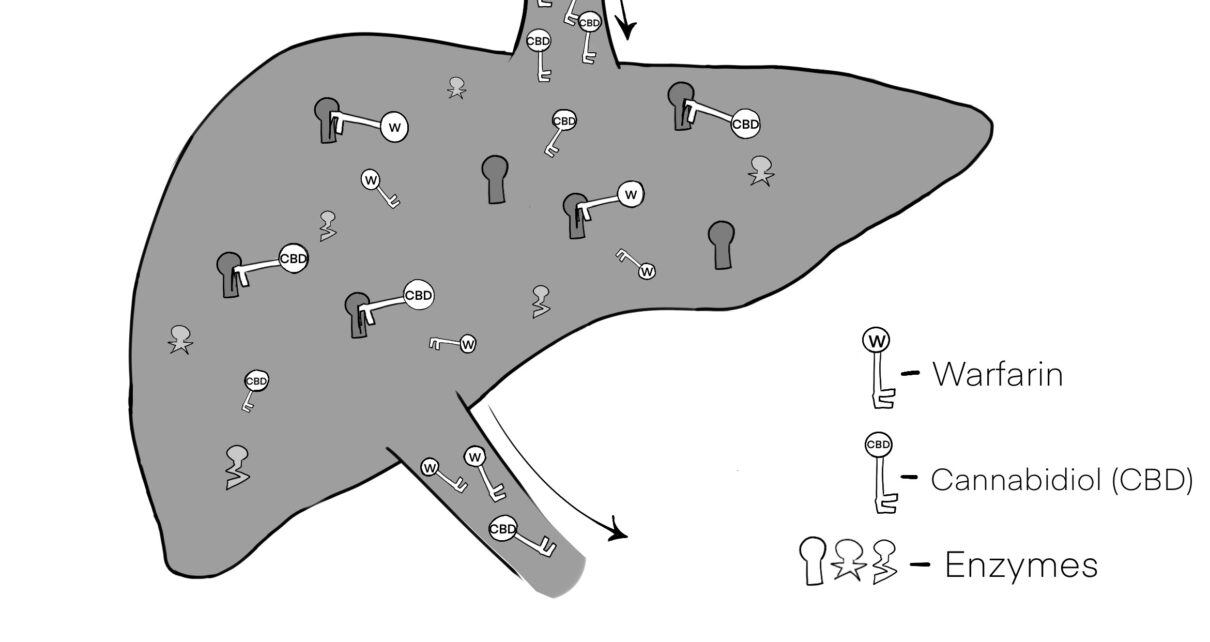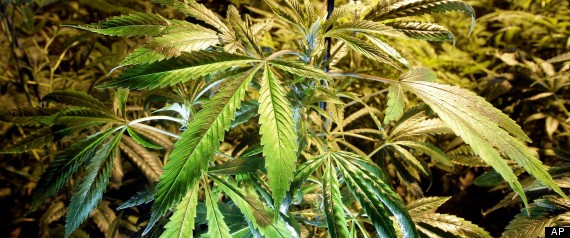Surprising positive and negative CBD drug interactions.
The potential harms of cannabis have been overstated and drilled into youth by the medical establishment. For some people, cannabis can have negative impacts but for the most part it is one of the safest, most effective medicines on the planet. Ironically, some potential harms from using the herb are only becoming known now, but they are not what you might think.
Recent developments in strains and extractions have led to some of the greatest negative consequences of using cannabis. These new discoveries raise important questions about the use of cannabis medicines in conjunction with prescription drugs, with surprising positive and negative interactions. Others suggest that these issues should lead patients to using whole plant medicines rather than isolated chemicals.
For many patients interested in cannabis as a medicine who are wary of the intoxicating effects of the plant, cannabidiol (CBD) has become the obvious answer. Though it does not have all of the positive benefits of tetrahydrocannabinol (THC), there are many medical effects of CBD that are similar, like the relief of inflammation, anxiety and pain. However, we are beginning to learn about potential drug interactions with CBD that are concerning, that do not appear to happen with THC.
The medical benefits of cannabis have been rediscovered mostly by accident by recreational consumers long before researchers provided any scientific evidence. A study by Dr. Marilou Gagnon and Heather Hobbs from the Canadian Institute for Substance Use Research, “Becoming a Medical Cannabis User” Revisited: Understanding the Role of Low-Threshold Access Points in British Columbia, Canada, documents the means by which cannabis has evolved into being used as a medicine in social settings where patients exchange products and experiences. The more patients use and share cannabis with others, the more knowledge there is about its potential uses and consequences.
The liver’s main function is to regulate chemicals in the bloodstream. Any drug that affects the specific enzymes which break down substances can generate unexpected results if taken with certain prescription drugs.
One of the lesser known effects of CBD is how it slows down the liver’s ability to break down other drugs in the bloodstream. In most cases, this is actually a positive interaction, where patients can use less of the prescription drug to achieve the same medical outcome. Unfortunately, this potential drug interaction is not well known amongst patients, pharmacists, or cannabis distributors, which could lead to serious health problems.
In this diagram CBD molecules enter into the liver where they attach to cytochrome P450 drug metabolizing enzymes, which also break down the popular blood thinner Warfarin and other drugs. When CBD is being broken down by P450, more Warfarin and/or these other drugs pass through the liver intact than would otherwise occur.
An explanation for this interaction was published in 2021 by Premalatha Balachandran, Mahmoud Elsohly and Kevin P Hill in a study titled Cannabidiol Interactions with Medications, Illicit Substances, and Alcohol: a Comprehensive Review. “CBD is known to interact with cytochrome… …P450 drug metabolizing enzymes, and this affects co-administration of CBD with other pharmaceutical drugs that are also inhibited or metabolized by these enzymes.”
The most worrisome interaction found so far is with some blood thinners. If the liver cannot break down the drug as fast as expected, a buildup of the medication could cause an increased risk of bleeding and swelling. CBD does not affect the breakdown of all blood thinners.
On a more positive note, opiates and THC are also broken down more slowly when CBD has been taken. This should be a critical component of harm reduction if the medical establishment changes course and embraces cannabis.
As a result of CBD’s interaction with P450, these medications are broken down more slowly by the liver if taken together:
Blood thinners:
Warfarin
Apixaban
Rivaroxaban
Antidepressants:
Imipramine
Trimipramine
Desipramine
Antiseizure:
Clobazam
lamotrigine
Oxcarbazepine
Valproate
Diazepam
Thyroid:
Levothyroxine
Heart:
Amiodaron
Anticonvulsants with reduced effect:
Ethosuximide
Clonazepam
Chlordiazepoxide
Other:
Opiates
THC
Alcohol
All of these drugs can still be safely used with CBD. However, in most cases the amount of the prescription drug required may need to be changed accordingly. As far as interactions go these are not terrible as long as the patient adjusts their medicine.
For those taking opiates, CBD could be a perfect complimentary drug. By helping reduce pain and inflammation on one hand, and increasing the lifespan of opiates in the bloodstream, patients using both should experience excellent pain relief and reduce their use of opiates. Indeed, everyone taking opiates should also be using CBD as a harm reduction measure.
These drug interactions are only becoming known as patient’s experience unwanted side-effects and report them to healthcare practitioners, producers, distributors and researchers. CBD has not, and will not likely ever, receive a Drug Identification Number, which is how pharmacists generally learn… …about prudential side-effects. Therefore, it has not been put through the rigorous testing normally done before a drug hits the market.
Indeed, the evolution of cannabis as medicine has been like a big drug experiment on the general public.
Popularized because unlike its cousin THC, the ingestion of CBD does not create strong intoxicated effects, it’s only in the last 20 years that strains high in CBD and concentrates were made for patients. As more CBD is being used by patients, particularly the elderly who often take a number of different
medications, we are discovering positive and negative interactions with a number of drugs. Unfortunately these interactions are not widely known, even in the pharmaceutical industry.
This study was done in 2021, the same year as the research on CBD and blood thinners we cited earlier. Since there is not just one manufacturer of CBD, reports of drug interactions are not consolidated. This information about CBD is so new, and the research so disjointed, that this study missed drug interactions with blood thinners entirely, which seems to be the most serious potential problem!
As time goes on and more evidence is revealed in real life settings and studies, these drug interactions will become common knowledge. For now they are little known, even amongst pharmacists.
There are still several other concerns.
As Balachandran, Elsohly and Hill explained, “The consequence of the lack of information on drug–drug interactions is an inadequate knowledge of their potential adverse reactions when consumed together. Interactions, either additive or synergistic, or contraindications are largely undescribed and are a major health concern. As evidenced from drug interaction databases such as the Medscape Drug Interaction Checker, which healthcare professionals and researchers primarily use to check for drug interactions, searches for CBD interactions typically yield few results. Therefore, a comprehensive detailed review is warranted to provide insight into this topic.”
It is possible that other prescription drugs, ones that are less commonly used than those we listed, might also interact in this way with CBD. We might not be aware of these interactions yet because… …of the lack of research and limited avenues to report these types of side-effects. This could be a serious concern if some cancer fighting prescription drugs are affected by CBD in this way.
Another rising concern is the possible drug interactions patients will experience as they try other isolated cannabinoids. Now that cannabis is legal, companies are looking for novel cannabinoid products that have specific medical benefits without the intoxicating effects of THC. These constituents may be safe when combined together in low doses in the natural plant. However, we really have no idea what type of effect these isolated chemicals will have when taken individually.
Cannabinoids like CBG (cannabigerol), CBN (cannabinol), and CBC (cannabichromene) have emerged on the market, each with its own unique properties and potential benefits. There are over 100 cannabinoids, with more being discovered almost every year. Flavonoids, terpenes, terpenoids, waxes and other possibly active chemicals in cannabis plants also have potential medical applications. Each with its own set of potential drug interactions.
Companies are also creating novel new synthetic cannabinoids and derivatives, in some cases to work around legal loopholes. In many cases these legal synthetic drugs can cause far more harm than the actual plant and the concentrates historically made from it.
The potential prescription drug interactions with these products are completely unknown.
With so much interest in using CBD as a medicine, it is critical that health care providers inform patients about potential drug interactions. At the Victoria Cannabis Buyers Club we have taken a renewed interest in this issue, updating our pamphlets and engaging with old members that are starting to add CBD to their medicine cabinet. We hope that by putting a spotlight on potential drug interactions with CBD we will avoid any health scares and help patients lower their dose of pharmaceutical drugs.
Ted Smith




